Since our Denmark Strait tank experiment from 2013 (see here in a post from 2014!) is still the one I refer to when I want to point to pictures of such an overflow experiment, I decided to do the experiment again to take new (and hopefully better) pictures. Three experiments later, I am not sure if the pictures are any better, but I tried…
If you want context on the experiment, it’s about what Steffi and I describe in our Frontiers for Young Minds article “How Warm Gulf Stream Water Sustains a Cold Underwater Waterfall”. In a nutshell: Warm Gulf Stream water travels northward into the Nordic Seas, but what happens then? It cools, sinks, and returns southwards as a cold waterfall over the Greenland-Scotland Ridge. So that’s what I am doing in this experiment.
Two different lunch boxes (left one glass, right one plastic) with play dough ridges in them to separate a smaller “Nordic Seas” reservoir from a larger “North Atlantic”.
I added a sports injury cool pack to the “Nordic Seas” and filled the tanks with water so the ridge covered approximately 3/4 of the water depth. Then I dripped blue food dye on the cool pack as a tracer of the cold water. The blue cold water filled up the reservoir and then started spilling over the ridge. Below you see the overflow developing over time.
So far, so good. In the left tank we can see the Denmark Strait overflow / “waterfall”, in the right tank the perspective is wrong so the waterfall itself is covered up by the ridge, but in both cases we see the “Nordic Seas” reservoir filled up with blue, dense water to the edge of the ridge, and then the blue, dense water at the bottom of the “North Atlantic”.
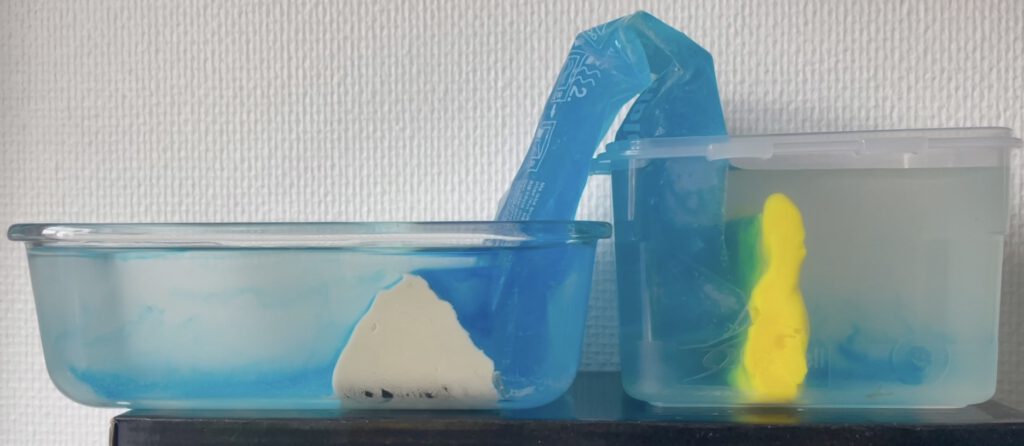 We also see a lot of blue in other places: In the surface of the tanks (where it is not really blue, that is just a reflection of the bottom water in the surface!), and in waves in the “North Atlantic”, where internal waves develop where the waterfall hits the bottom or the back edge of the tank. Not necessarily what I wanted to show, but still interesting to discuss maybe?
We also see a lot of blue in other places: In the surface of the tanks (where it is not really blue, that is just a reflection of the bottom water in the surface!), and in waves in the “North Atlantic”, where internal waves develop where the waterfall hits the bottom or the back edge of the tank. Not necessarily what I wanted to show, but still interesting to discuss maybe?
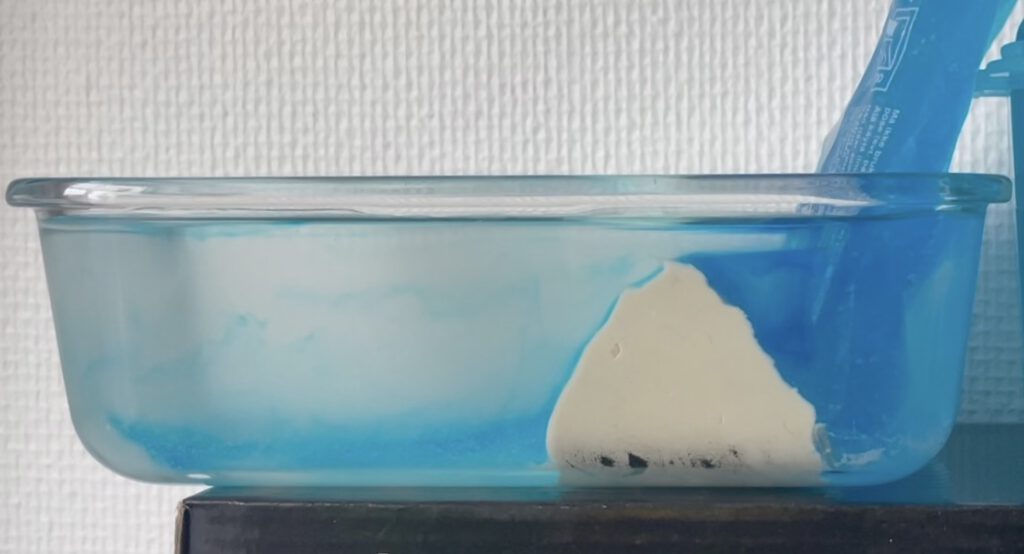 Things that I noticed while doing the experiment:
Things that I noticed while doing the experiment:
- make sure there isn’t a lot of turbulence left (from pouring the water or adding the cool pack) when you start the experiment
- make sure you drip the dye ON the cool pack (so it doesn’t get caught up in the remaining turbulence and gets swept over the ridge close to the surface before it had a chance to cool and sink)
- think about your camera setup… I don’t know how I am not learning this. My time lapse has my arm and my other camera in it so much that I cannot actually use it
In the experiment in the picture above, I did not notice that I smeared part of the “Greenland-Scotland Ridge” against the sides of my tank when inserting the cooling pack, and with that created the most visually interesting structure in the whole experiment. That’s distracting from what I want to show even though otherwise that experiment went quite nicely…
I am really out of practice when it comes to tank experiments. Shocking! But maybe this is my first step back?
Semper S, Glessmer M, Våge K and Pickart R (2022) How Warm Gulf Stream Water Sustains a Cold Underwater Waterfall. Front. Young Minds. 10:765740. doi: 10.3389/frym.2022.765740
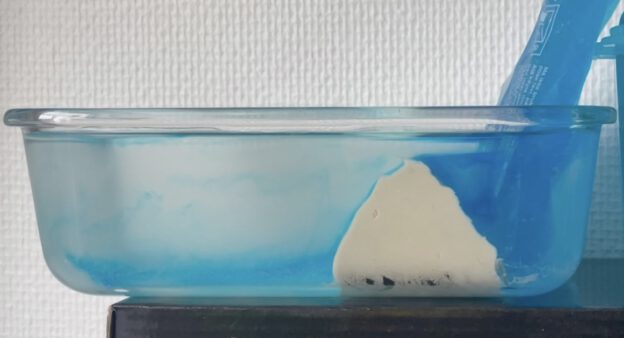

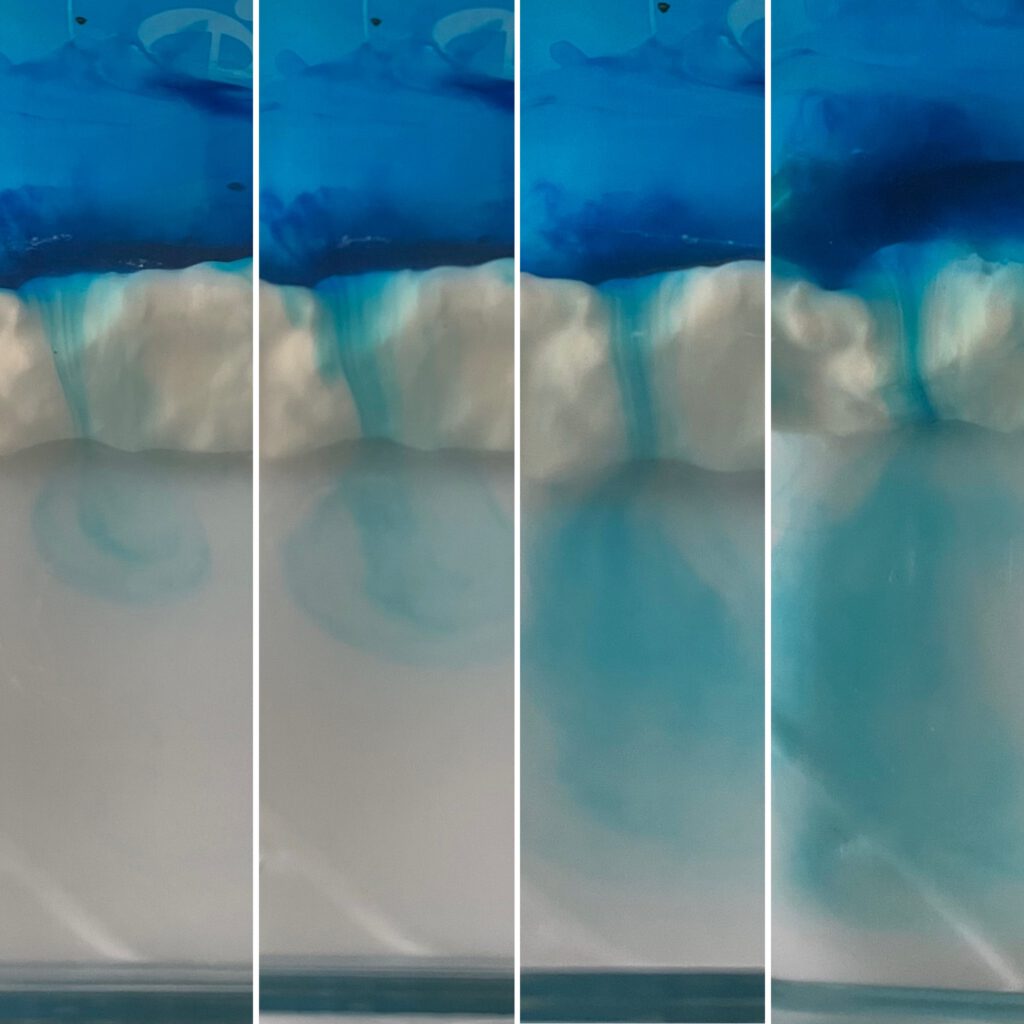
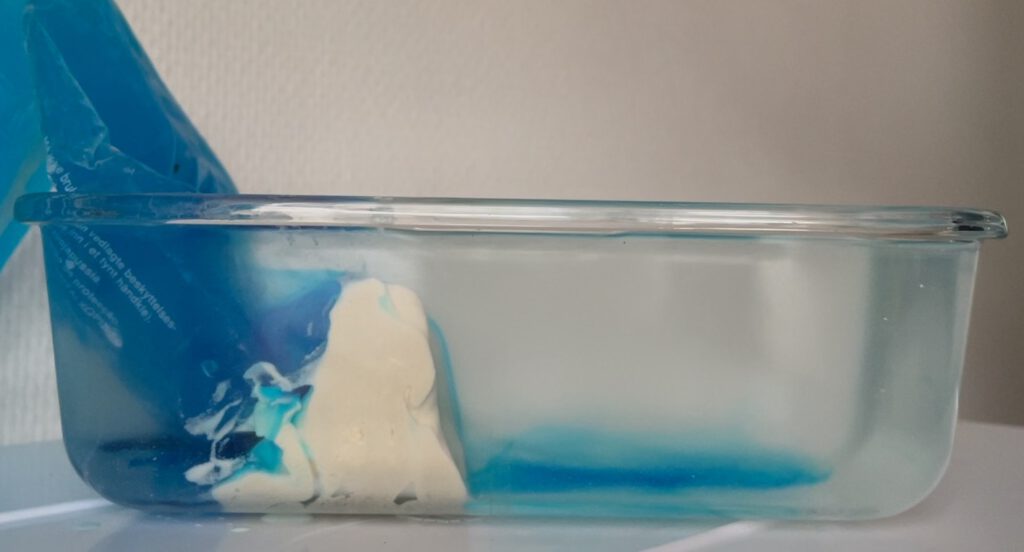
Great demo. I got my son to demonstrate general idea of thermohaline overturning for a grade-school science fair (dyed ice cube sitting on one side of the tank), which I show undergrads and grad students in oceanography classes. Introducing the barrier is really helpful both for relevance to the ocean and clarifying the overturning flow. I will point students to this post in the future.
Thank you! Yes, I love the overturning demo, too! I’ve started to use cool packs instead of dyed ice cubes to avoid planting the seed for the misconception that dense water in the global overturning circulation, or in the case of this experiment the Nordic Seas-Denmark Strait-North Atlantic part of it, is fresh melt water. But not sure how big that danger actually is; I just found myself pointing it out so much that I decided to go for the cool pack and then instead ask “if we used ice cubes instead, what would happen and how does that relate to the real ocean?”